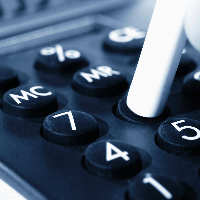By Dan Boudreau
“How do I tell you the amount of sales I’ll make next year, when I just don’t know?”
For new business start-ups, projecting sales can be a frustrating, uncertain experience. To go into a business without having some idea of how much you’ll sell might be thrilling for a gambler, but if you stand to lose a lot, it’s just too risky.
A sales forecast is not difficult or scary once you understand it. Understand that forecasting requires that you do some guessing. The secret to a credible sales forecast is to remove as much of the guesswork as possible, using measurable building blocks.
Here are a few tips for bringing order to your forecasting chaos:
1. Talk to potential customers to determine which products and services they will buy, and how much they are willing to pay. More importantly, find out how much they might buy from you once your business is started.
2. Determine what your units will be (i.e. by product, service, or average sale). If you’re getting into a service business, each hour of billable time will be a unit. For example, one hour would be a unit for an automotive shop.
3. Calculate the prices your customers will pay for each unit. For example a trainer might sell services by the hour, by the day or by the workshop. Research competitors’ prices in order determine where to set rates for your service.
4. The first year of your sales forecast should be projected monthly for each of the first 12 months. Anything beyond the first year is typically only yearly totals.
5. Project sales conservatively. Pie-in-the-sky forecasts will erode your credibility and scare away investors or lenders. You don’t need to impress anyone with large numbers, just show that you can pay the bills and hopefully earn a small amount of profit.
6. Find a way to speak with potential customers and in doing so, get commitments to purchase from your business. This can be challenging for a business not yet started. For example, a signed contract removes much of the uncertainty, a letter of intent less so but still quite compelling. The more of your sales figures you can validate or support with actual ready-to-pay customers, the more credible your forecasts are likely to be.
7. Adjust sales projections using your knowledge of the business and industry. For example, if you are selling flowers, you know you can expect a spike in sales on Mother’s Day. If a major contract kicks into gear in month 5, the forecast should reflect the increase in sales. If your business is seasonal, make sure the fluctuations are reflected in your sales forecast.
When it is time to look into your crystal ball, don’t be afraid. Roll up your sleeves, talk to potential customers, and use what you know to fine tune until you’ve created a realistic, credible forecast. Once you have confidence in it, you should have an easier time convincing your banker to believe it.
Do you have questions about how to forecast sales for your business?
Would you like to offer any tips on how to project sales?
© All Rights Reserved.
